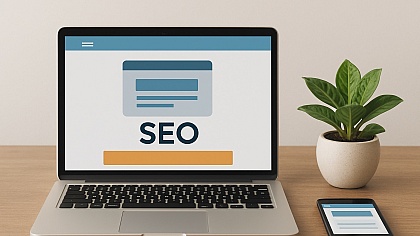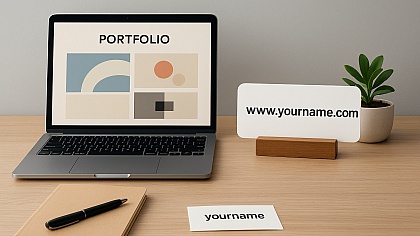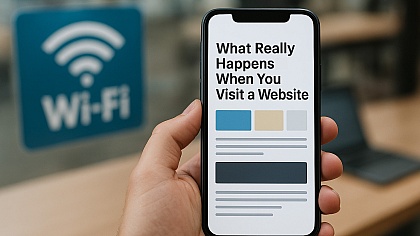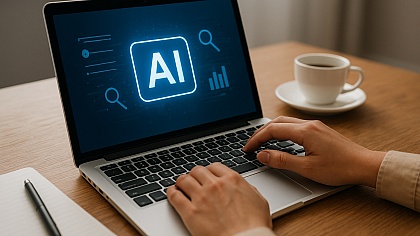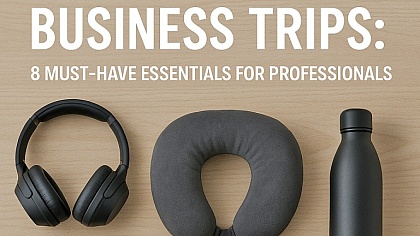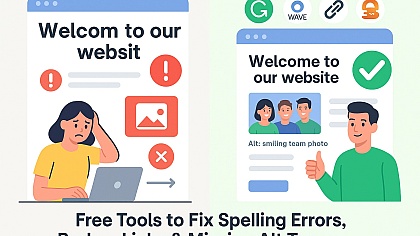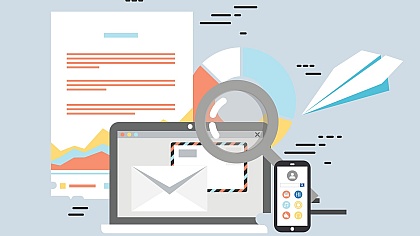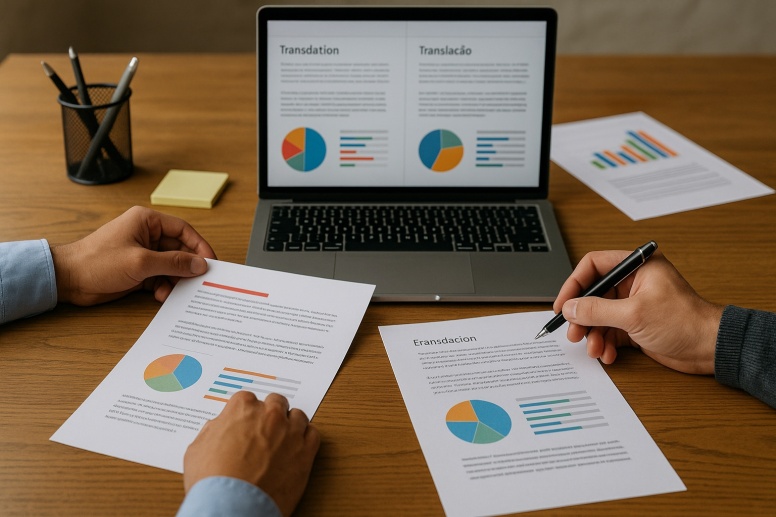
How to Translate Marketing Documents Without Losing Layout
Translating your marketing documents into another language isn’t just about converting words. It’s about making sure your message and your layout work seamlessly in the new language. Whether you’re using an AI translation tool or hiring professional document translation services, you need a strategy to preserve both your content and your design.
In this guide, we’ll walk through why layout matters, common issues to avoid, translation tool options, formatting best practices, and real-world examples to help your company maintain consistency across languages and platforms, without unnecessarily increasing cost.
Why Layout Matters in Marketing Document Translation
Your layout is more than decoration. It’s how your company communicates visually. Fonts, images, alignment, and color schemes create a tone that supports your marketing message. When the layout is disrupted during document translation, your materials risk looking unprofessional, even if the words are technically accurate.
Common Layout Issues in Document Translation
Several challenges can appear when translating formatted marketing documents:
-
Text expansion or contraction: Translated content can take up more or less space, affecting alignment.
-
Misaligned graphics or text boxes: These shifts make your content look sloppy or inconsistent.
-
Broken formatting: Fonts, bullet styles, or paragraph spacing may not carry over correctly in the translated version.
Even small layout changes can weaken your messaging or damage your brand perception, whether you’re using an online translator or a professional translator.
The Risk of Poor Formatting in Multilingual Marketing
A translated document with messy formatting sends the wrong message. You may lose the reader’s trust before they even engage with your content. That’s why preserving the layout is just as important as achieving accurate translations. Whether you're using a document translator tool or hiring experts, design should never be an afterthought.
AI vs. Professional Translation: Which Is Right for You?
Choosing the right approach depends on your project needs:
When to Use AI Translation Tools
An AI translation solution is ideal when:
-
You need speed for short-term or internal marketing materials.
-
The layout is relatively simple.
-
You want a first-pass translation to review before polishing.
Benefits of AI Translation Tools:
-
Faster turnaround without needing to wait for human translators.
-
Lower cost, making them great for companies scaling quickly.
-
Built-in support for preserving layout structure.
-
Solid base-level accuracy, especially with improvements in AI-powered engines.
When to Use Professional Translation Services
Hiring a professional translator or agency is best for:
-
High-stakes, public-facing content like brochures or landing pages.
-
Complex formatting or creative messaging that needs cultural nuance.
-
Campaigns where your company’s brand voice must remain intact.
Document translation services usually range from $0.10 to $0.25 per word. More complex formats or faster delivery timelines may raise the cost.
Combine the Best of Both: Hybrid Translation Workflows
Want speed and quality? A hybrid method combines AI translation with human expertise. Start with an online translator or document translator tool, then pass it to a professional for post-editing.
This method:
-
Speeds up the overall workflow.
-
Reduces manual formatting work.
-
Balances cost, speed, and quality for better outcomes.
Tools That Help Preserve Layout During Translation
Using the right tools ensures your layout remains intact during the translation process. Here are a few that support layout-safe document translation:
1. MachineTranslation.com
MachineTranslation.com is an AI-powered document translator that can preserve the layout and improve over time by learning your company’s tone, terminology, and preferences. It’s perfect for marketers who need accurate translations with minimal edits.
2. Google Translate for Docs
Google Translate is a popular online translator that handles DOCX files and retains basic formatting. It’s a good choice for simple internal documents, but may not handle complex layouts well.
3. Smartcat
Smartcat is a translation platform that can be used for collaboration-focused projects wherein human translators can lay out and edit translations. It’s well-suited for companies managing high volumes of multilingual content.
Handling PDF, Word, and InDesign Files
Some formats are harder to translate while preserving layout. Here’s how to handle them:
-
Scanned Images: Extract content using tools like the Image-to-Text Converter by Tomedes to clean up documents before translation.
-
PDFs: Use Adobe Acrobat Pro to convert them into Word files, or try TransPDF to convert and reassemble the layout after translation.
-
InDesign (INDD): Submit these to professional translation services experienced with design-heavy marketing materials.
Read more: 9 Best Image to Text Converter Tools
Best Practices Before You Translate
Getting your marketing documents ready helps ensure both design and language are preserved.
1. Clean Your Layout
Use consistent formatting, separate text from images, and keep the file structure clean.
2. Use Editable File Formats
Save your materials in DOCX, IDML, or other editable formats. Avoid scanned files or locked PDFs, which raise the cost and time of translation.
3. Collaborate With Your Translator
Work closely with your document translator or translation service. Explain which parts of the layout are fixed and which can be adjusted, so nothing gets lost in translation.
Comparing Costs: Free Tools vs. Professional Services
Choosing between a free online translator and hiring professional translation services often comes down to cost—but the cheapest option isn’t always the smartest. To make the best decision for your company, it’s important to weigh both the upfront price and the hidden expenses that may arise later in the process.
Hidden Costs of Free Tools
A free document translator tool may seem like a great way to cut costs, especially for small teams or early-stage projects. But poor translation accuracy, formatting errors, and missed cultural context can lead to time-consuming revisions or even reputational damage.
You might save money upfront, but if you or your team spend hours fixing layout or correcting tone, the real cost adds up quickly. For public-facing materials, using a free AI translation tool without human review often results in content that feels off-brand or unprofessional.
Why Professional Translation Pays Off
Hiring a professional translator or agency brings long-term value by delivering accurate translations that are culturally relevant and visually polished. This is especially important for companies expanding into global markets where brand perception is critical.
Professional document translation services understand not just language, but also layout requirements, industry jargon, and audience expectations. The return on investment is clear: higher customer trust, stronger engagement, better localization outcomes, and a more professional image across all languages.
Tips to Reduce Translation Costs
If you’re concerned about translation cost, there are smart ways to stay on budget without sacrificing quality:
-
Group projects together to negotiate better rates with your translation services provider.
-
Use editable templates in DOCX or INDD format to reduce time spent on reformatting translated files.
-
Start with an AI translation tool to produce a quick first draft, then hire a professional translator to refine the content for accuracy and layout consistency.
-
Prioritize content types: Reserve manual translation for customer-facing materials, and use AI translators for internal documents or early drafts.
-
Build a glossary of brand terminology to speed up future translations and ensure consistency.
By planning ahead and using a hybrid workflow, your company can cut costs while still achieving accurate, professional translations that support your brand worldwide.
Case Studies: Translation Done Right
Example 1: AI Translation for Digital Ads
A global tech company used MachineTranslation.com to localize their ad creatives. The AI tool preserved layout integrity, allowing internal teams to focus on reviewing tone. The result? Faster market rollout and lower translation cost.
Example 2: Professional Translation for Product Brochures
A lifestyle brand worked with a professional translation service to release brochures in five languages. Slogans were adapted for cultural fit, and the layout remained brand-aligned across all regions, delivering accurate translations and consistent design.
Read more: 25 Top Designer Tools Catering to Web and Graphic Design Professionals
Design and Language Must Work Together
To reach global audiences, your marketing documents must maintain both visual and linguistic clarity. Whether you use an AI translator or a professional translator, choose tools and services that preserve your brand message accurately and affordably.
If you're just starting out, try a simple file through a document translator tool. For polished campaigns, work with professional translation services that understand layout and language as a package.
The best strategy? Balance cost, quality, and timeline, so your message lands with impact in every language.
